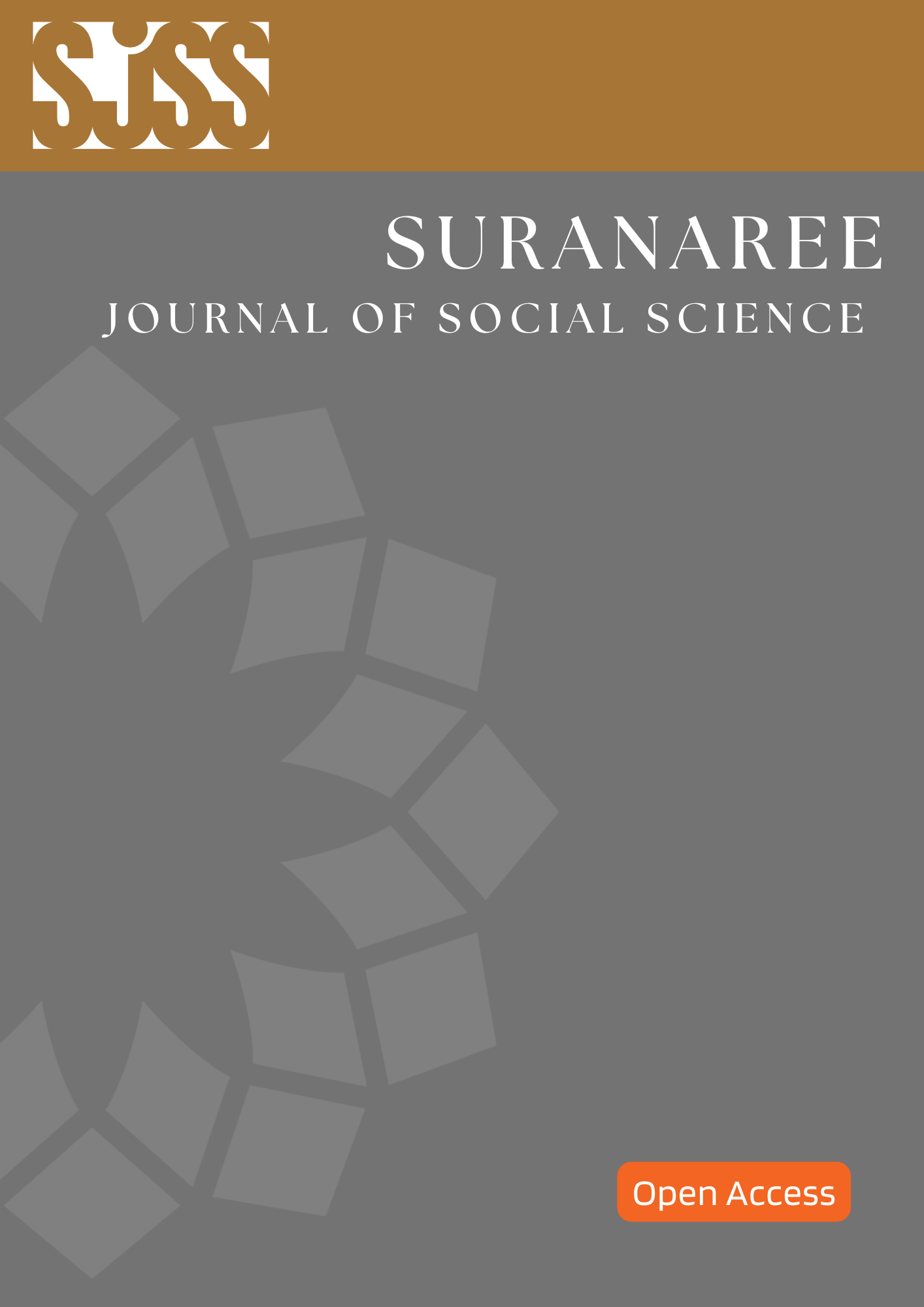Communication Models of New Normal Lifestyles in Mueang Nakhon Ratchasima
Main Article Content
Abstract
Background and Objectives: The aftereffect of the Covid-19 pandemic sees humans adapting and changing their lifestyles and behaviors in regard to airborne disease transmission in ways that have never been seen before. These extraordinary lifestyle changes are also creating new forms of communication and social connection, along with the rapid changes in technological advancement. This qualitative research herein, aimed at studying the development of communication patterns and lifestyles changes amongst the people of Nakhon Ratchasima.
Methodology: In this qualitative research study, there were 75 main participants selected according to the inclusion criteria. They were divided into three groups as follows: (1) a group of government organizations, (e.g., chief executives or assigned persons), (2) a group of private organizations, (e.g., executives in charge of communications or assigned personnel), and (3) a group of citizens, which consisted of community leaders, (e.g., community leaders, sub-district headmen, and village health volunteers, including people in the area of local government organizations in Mueang, Nakhon Ratchasima). The research instrument was an interview which focused on the following four aspects: (1) message senders, (2) messages, (3) communication channels, and (4) message receivers. The interview form consisted of 62 items which were selected from the results of the Index of Item Objective Congruence (IOC) with an average of 0.50 or higher. The methods of data collection were group interviews and individual in-depth interviews. The data were analyzed, classified, interpreted, synthesized, and presented with an analytical description.
Main results: The research findings revealed that the group of senders sent messages regarding knowledge, understanding, symptoms and means of self-protection from Covid-19, which led to new normal lifestyles. The messages were sent to citizens, or receivers, through various communication channels. These include television media, newspapers, print media, radio broadcasting media, local audio media, internet media, social media, and personal media. The messages delivered ways to behave and reduce risk, including ways of thinking, learning, communicating, and best practices. In addition, new ways of managing one’s life emerged. these included, for example, small group meetings via online systems, working from home, ordering consumables through online services, online banking transactions, and utilizing online teaching and learning systems.
Discussion: The sender, message, channel, receiver (SMCR) model allowed people to relate to one another and link roles in an integrated communication cycle, where there was an awareness of and consideration for differences in adapting to the new normal lifestyle. In addition, this communication model also emphasized working together to disseminate important information to relevant sectors at all levels so that they could prepare, protect, care for, follow up, and maintain both their health and public health in unison.
Conclusion: The use of social media platforms as a two-way communication channel for sending and receiving information is a response to the need for assistance. It also helps to appropriately increase interpersonal interactions during times when the population faces health and social problems.
Article Details

This work is licensed under a Creative Commons Attribution-NonCommercial-NoDerivatives 4.0 International License.
References
Apiwatkittana, W. (2023). Predictive Factors of Preventive Behaviors against Emerging and Re-emerging Infectious Diseases among High School Students in Hat Yai, SongkhlaProvince. Academic Journal of Community Public Health, 9(4), 111-122.
Berlo, D. K. (1960). The Process of Communication. Holt, Rinehart and Winston.
Boonsiripun, M. (2020). “New Normal” The Royal Society of Thailand. https://news.thaipbs.or.th/content/292126.
Brahmaputra, S. (2020). New Normal and a Changing Way of Life. Department of Industrial Promotion.
Bunchutima, S., & Khotchali, K. (2016). Risk Communication. 21st Century.
Converse, P. E., & Turner, R. H. (1965). Social Psychology: The Study of Human Interaction. Holt, Rinehart and Winston.
Cooper, L. (1932). The Rhetoric of Aristotle. Englewood Cliffs, N.J.: prenticel Hall.
Department of Environmental Quality Promotion. (2016). Climate Change. http://climate.tmd.go.th/content/file/2104
Department of Health Service Support, Ministry of Public Health (2020). Annual Report 2020. Department for Health Service Support.
Department of Health, Ministry of Public Health. (2021). Action Plan for Climate Change Adaptation in Public Health, Phase 1 (2021-2030). Thansumrit 249.
Kunwichit, S., Ramanee, Y., & Somboonsuk, B. (2015). Climate Change and Human’s Livelihoods: An Examination of Impacts and Adaptations of Rice Farmers in Songkhla Lake Basin Area. Research Report. Prince of Songkla University.
Lasswell, H. D. (1948). The Communication of Ideas. Harper and Brother Publishers.
Manmana, S., Iamsirithaworn, S., & Uttayamakul, S. (2020). Coronavirus Disease-19 (COVID-19). Journal of Bamrasnaradur Infectious Deiseases Instutitue, 14(2), 124-133.
Meteorological Department. (2020). Climate Change. http://climate.tmd.go.th/content/article/9.
Panee. (2020). If the Temperature Warms By 2 Degrees, The World Is at Increased Risk of Epidemics. https://sdthailand.com/2020/03/climate-change-and-disease
Post Today. (2020). New Normal: 10 New Lifestyle Trends of Thai People After COVID-Free Life. https://www.posttoday.com/life/work-life-balance/623097
Prakhongjai, P. (2015). Principles of Communication Science. Chulalongkorn University Press.
Pramaipim, T., & Poompruk, C. (2023). Service Efficiency in the Context of a New Way of Society: A Case Study of the Restaurant to Eat Yu Dee of the Office of the Agricultural Museum in Honor of His Majesty the King. Journal of Value Chain Management and Business Strategy, 2(1), 54-69.
Ritchie, J., & Lewis, J. (eds.). (2003). Qualitative Research Practice: A Guide for Social Science Students and Researchers. Sage Publications.
Rogers, E. M., & Shoemaker, F. F. (1971). Communication of Innovations: A Cross – Cultural Approach. Free Press.
Schramm, W. (1974). The Process and Effects of Mass Communication. University Illinois Press.
Seub Nakhasathien Foundation. (2020). Coronavirus Outbreak It Is Part of The Problem of Climate Change. https://www.seub.or.th/bloging/news/global-news/การระบาดของโคโรน่าไวรั/.
Sompopcharoen, M. (2019). Risk Communication. https://rh4.moph.go.th/upload_file_section_r4/XUbpni92xjHwxk0nQgsaBz2xLRJn3I.pdf.
The Bureau of Registration Administration, Department of Provincial Administration. (2020). The Population of The Muang District Nakhon Ratchasima Province. https://stat.bora.dopa.go.th/stat/statnew/statMenu/newStat/home.php
Walaski, P. (2011). Risk and Crisis Communications: Methods and Message. Wiley. https://doi.org/10.1002/9781118093429


